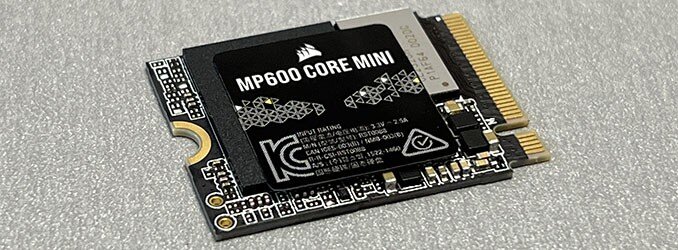Mobile devices like ultrabooks, tablets, and handheld gaming consoles are getting more popular each year. Even if we look only at handheld consoles, a year ago, we had one popular option: Steam Deck. Right now, there is also ASUS ROG Ally and Lenovo Legion GO, and soon MSI will join with their new product. Most of consoles and other devices are sold with lower capacity or simply slower storage, so it's not a surprise that many owners think about replacing the storage, which more often is M.2 SSD in a user-friendly and tiny 2230 form factor. For those users, Corsair designed the reviewed today MP600 Core Mini at a high 2TB capacity.

 )
)